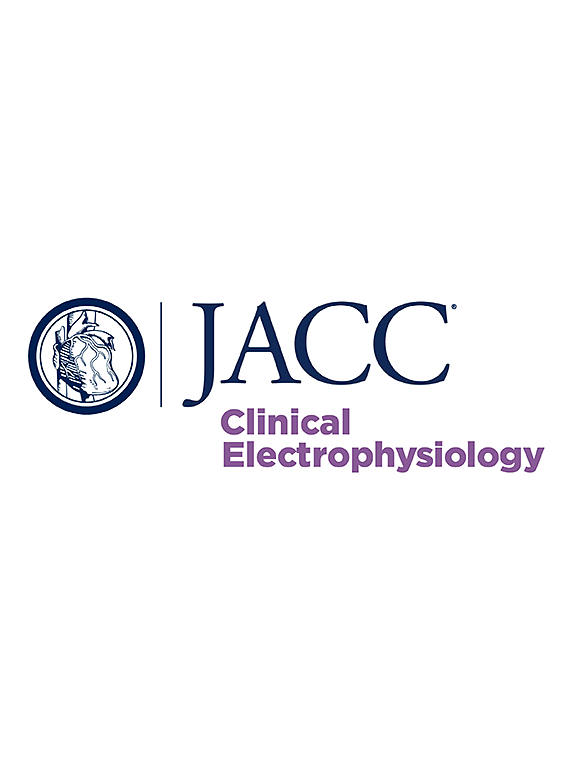Inconclusive Single-Lead ECGs From Smart-Devices
IF 7.7
1区 医学
Q1 CARDIAC & CARDIOVASCULAR SYSTEMS
引用次数: 0
Abstract
Background
Multiple smart devices can record single-lead electrocardiograms (SL-ECGs) with automated rhythm classification. The impact of pre-existing baseline ECG anomalies on the accuracy of automated rhythm classification remains largely unknown.
Objectives
This study sought to compare the presence of predefined ECG anomalies and their impact on rhythm classification ability of 5 commercially available FDA and CE-marked wearable smart-devices.
Methods
This prospective study included consecutive patients undergoing electrophysiological procedures at a tertiary referral center. Each participant obtained a 12-lead ECG followed by SL-ECGs with 5 different smart devices (AliveCor KardiaMobile, Apple Watch 6, Fitbit Sense, Samsung Galaxy Watch 3, and Withings ScanWatch). Two independent cardiologists performed manual rhythm classification and assessed the following ECG anomalies: ventricular pacing, conduction delay, low voltage, artifacts, and premature atrial or ventricular complexes.
Results
A total of 256 participants were included (29% female, mean age 66 years) generating 1,280 recorded SL-ECGs. Of these, 242 SL-ECGs (19%) were classified as inconclusive by at least 1 smart device. The presence of any ECG anomaly was significantly higher in inconclusive vs conclusive SL-ECGs, with 74% vs 42%; P < 0.001. ORs with 95% CIs for inconclusive classification by ECG anomaly were ventricular pacing 6.35 [3.84-10.61], conduction delay 2.42 [1.82-3.22], low voltage 2.37 [1.75-3.21], minor artifact 1.72 [1.17-2.51], major artifact 10.62 [6.78-16.99], premature atrial complex 2.23 [1.29-3.74], and premature ventricular complex 1.94 [1.29-2.89]. Notable differences were found between the assessed smart devices.
Conclusions
Automated rhythm classification is highly susceptible to baseline ECG anomalies. This study provides insights into the most appropriate patient population for smart device–based arrhythmia monitoring and offers guidance for selecting the optimal smart device tailored to individual patient characteristics.
来自智能设备的不确定单导联心电图:基线心电图异常的影响。
背景:多个智能设备可以记录单导联心电图(SL-ECGs),并自动进行节律分类。预先存在的基线心电图异常对自动节律分类准确性的影响在很大程度上仍然未知。目的:本研究旨在比较5种市售的FDA和ce标记的可穿戴智能设备是否存在预先定义的ECG异常及其对节律分类能力的影响。方法:这项前瞻性研究包括在三级转诊中心接受电生理手术的连续患者。每位参与者都获得了12导联心电图,然后使用5种不同的智能设备(AliveCor KardiaMobile、Apple Watch 6、Fitbit Sense、Samsung Galaxy Watch 3和Withings ScanWatch)进行sl -ECG。两名独立的心脏病专家进行了手动节律分类,并评估了以下心电图异常:心室起搏、传导延迟、低电压、伪影和过早的心房或心室复合物。结果:共纳入256名参与者(29%为女性,平均年龄66岁),产生1,280例记录的sl - ecg。其中,242例sl - ecg(19%)被至少1个智能设备归类为不确定。任何心电图异常的存在在不确定的sl -ECG中明显高于结论性的sl -ECG,分别为74%和42%;P < 0.001。心电图异常不确定分类95% ci的or分别为室性起搏6.35[3.84-10.61]、传导延迟2.42[1.82-3.22]、低电压2.37[1.75-3.21]、轻微伪影1.72[1.17-2.51]、严重伪影10.62[6.78-16.99]、房性早孕复合2.23[1.29-3.74]、室性早孕复合1.94[1.29-2.89]。被评估的智能设备之间存在显著差异。结论:自动节律分类对基线心电图异常非常敏感。这项研究为基于智能设备的心律失常监测提供了最合适的患者群体,并为选择适合个体患者特征的最佳智能设备提供了指导。
本文章由计算机程序翻译,如有差异,请以英文原文为准。
求助全文
约1分钟内获得全文
求助全文
来源期刊

JACC. Clinical electrophysiology
CARDIAC & CARDIOVASCULAR SYSTEMS-
CiteScore
10.30
自引率
5.70%
发文量
250
期刊介绍:
JACC: Clinical Electrophysiology is one of a family of specialist journals launched by the renowned Journal of the American College of Cardiology (JACC). It encompasses all aspects of the epidemiology, pathogenesis, diagnosis and treatment of cardiac arrhythmias. Submissions of original research and state-of-the-art reviews from cardiology, cardiovascular surgery, neurology, outcomes research, and related fields are encouraged. Experimental and preclinical work that directly relates to diagnostic or therapeutic interventions are also encouraged. In general, case reports will not be considered for publication.
 求助内容:
求助内容: 应助结果提醒方式:
应助结果提醒方式:


